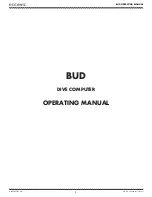
12
©2017 Guangzhou ZHIYUAN Electronics
Date: 2017/05/22
User Manual
V1.00
Guangzhou ZHIYUAN Electronics Co., Ltd.
CAN-bus recording analyzer
CANREC User Manual
5
Chapter
Chapter
5:
5:
Function
Function
Introduction
Introduction
The most difficult point in CAN-bus troubleshooting is accidental failures whose
primary causes cannot be diagnosed accurately by users and even CAN experts. For
example, CAN data transmission interruption occurs once within 72 hours in the pitch
system of wind turbine. Instrument panel of new energy vehicle “turns blank” once
within a 10,000-kilometer drive, and it cannot be recovered again. High-speed train
suffers emergent deceleration once caused by CAN communication abnormality
within a 2,000-kilometer drive. Like a time bomb, these accidental CAN
communication abnormalities are thrilling designers and users. Therefore, a CAN-bus
data recorder is equipped for the occasions where these accidental failures are easy
to occur. Similar to a “black box”, it records CAN data for analyzing the cause of an
error upon its occurrence. However, due to the limits of storage speed and capacity,
the current CAN-bus data recorder can only save a limited number of specific
CAN-bus data, and the CAN-bus waveforms cannot be saved together. Therefore,
designers and users can not use them to locate CAN-bus transmission faults and
solve the problem quickly.
As a leading supplier of CAN-bus in China, 4 years ago, ZHIYUAN Electronics
developed CANScope series CAN analyzers for CAN-bus troubleshooting. However,
in addition to the waveform of an error frame saved by the CANScope series CAN
analyzer, users also want to know the cause and appearance of the error frame, as
well as the waveforms before and after the error occurs.
ZHIYUAN Electronics developed the latest CANREC ----- 8-channel CAN-bus
recording analyzer.
It can operate independently without PC, store CAN
messages and waveforms for a long time so that users can find out errors and
observe the waveforms before and after such errors occur,
as shown in Figure
5- 1.















































